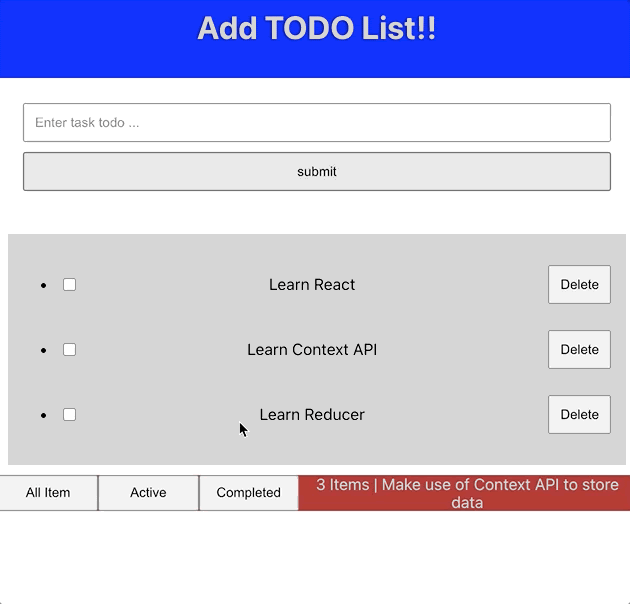

We'll leave the web server running while we look at the application with VS Code. You should see the React logo and a link to "Learn React" on in your browser. Let's quickly run our React application by navigating to the new folder and typing npm start to start the web server and open the application in a browser: cd my-app npm start
TODOLIST APP IN REACT INSTALL
Note: If you've previously installed create-react-app globally via npm install -g create-react-app, we recommend you uninstall the package using npm uninstall -g create-react-app to ensure that npx always uses the latest version. This may take a few minutes to create the React application and install its dependencies. Where my-app is the name of the folder for your application. You can now create a new React application by typing: npx create-react-app my-app Tip: To test that you have Node.js and npm correctly installed on your machine, you can type node -version and npm -version in a terminal or command prompt.

npm is included with Node.js which you can download and install from Node.js downloads.
TODOLIST APP IN REACT GENERATOR
To use the generator as well as run the React application server, you'll need Node.js JavaScript runtime and npm (Node.js package manager) installed. We'll be using the create-react-app generator for this tutorial. The Visual Studio Code editor supports React.js IntelliSense and code navigation out of the box. React is a popular JavaScript library developed by Facebook for building user interfaces.


 0 kommentar(er)
0 kommentar(er)
